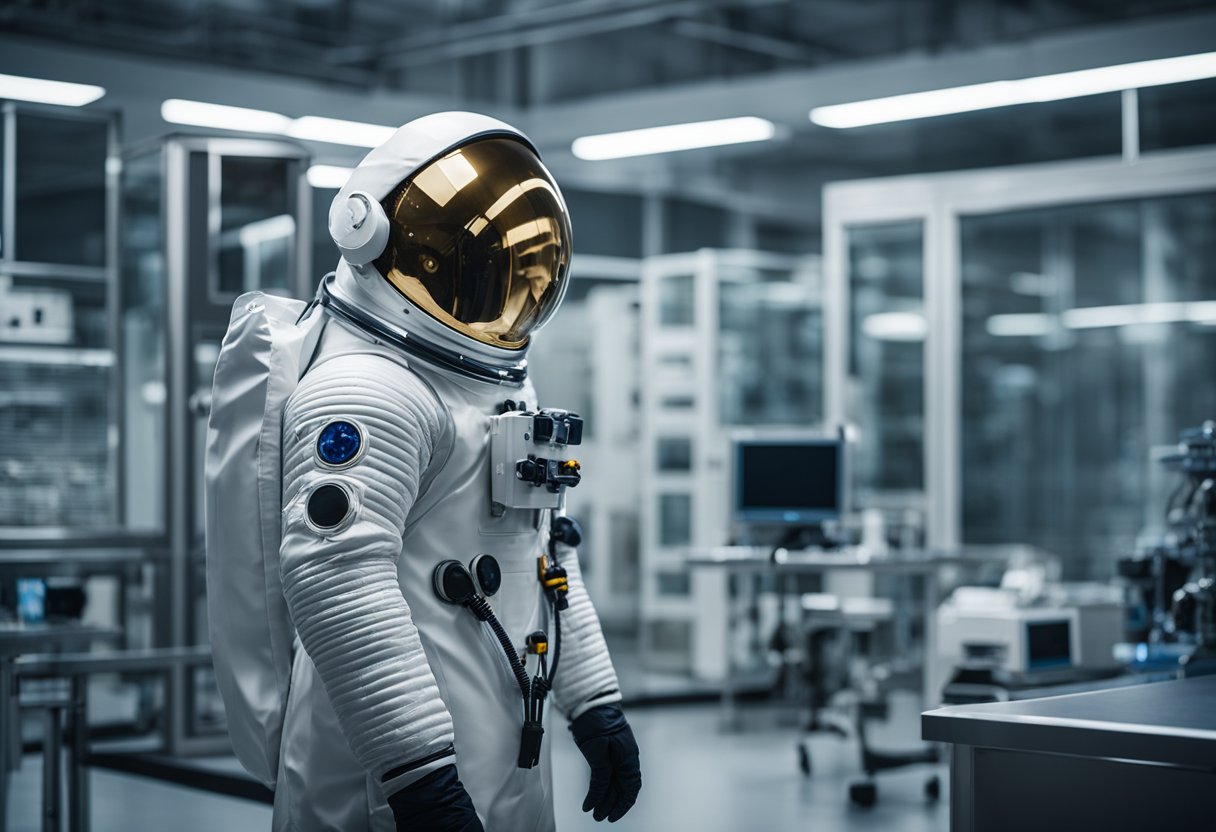
Space suits have experienced significant evolution since the early days of space exploration. In the dawn of the Space Age, suits were primarily designed to protect astronauts within the confines of their spacecraft. But as missions became more ambitious, requiring extravehicular activities (EVAs), the technology underpinning space suit design became increasingly complex. We recognised the need to create suits that could support human life in the harsh vacuum of space, facilitating not just survival but also mobility and functionality.
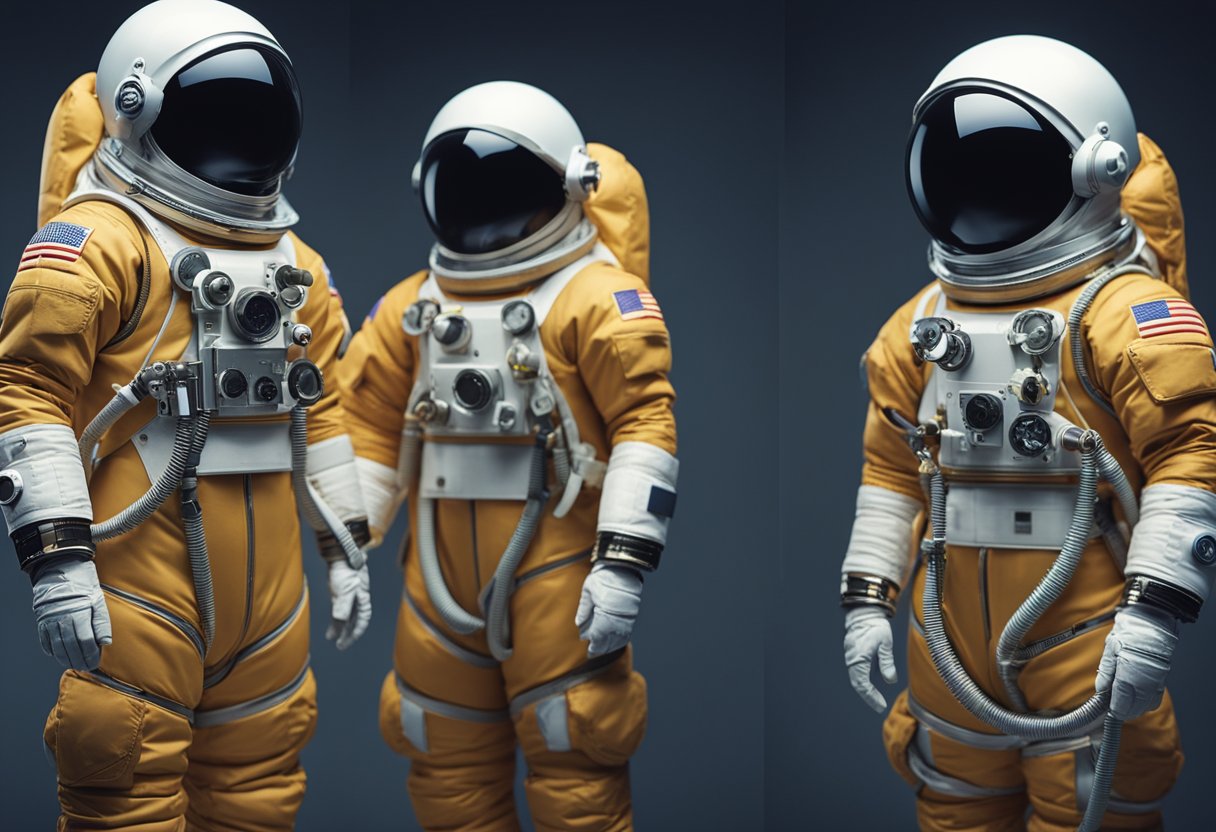
Materials and engineering practices have advanced to produce suits that are robust yet flexible, capable of withstanding extreme temperatures, micro-meteoroids, and solar radiation. Each iteration of space suit technology has built upon the previous, incorporating lessons learned and breakthroughs in materials science. Our efforts in pressure suit engineering, combined with improvements in life-support systems, have continually raised the bar for what can be achieved in terms of safety and performance.
Space suits have undergone significant evolution since the early days of space exploration, adapting to the changing demands of missions and the harsh conditions of space. We’ll explore key developments during the Mercury and Gemini programmes, followed by advancements seen in the Apollo missions.
During the Mercury programme, initiated by NASA, spacesuits were essentially modified high-altitude flight suits. These suits had to be pressurised, offer oxygen supply, and provide basic protection against the vacuum of space. Notably, astronaut Gordon Cooper wore such a suit, tailored to meet the requirements of space travel without the luxury of the experience we’ve later gleaned from successive missions.
The Gemini programme marked a transition to more advanced suit designs, reflecting the need for greater manoeuvrability and longer duration missions. Gemini space suits allowed astronauts to perform the first American spacewalks, demonstrating a capability for extravehicular activity that would be essential for the moon landings.
For the Apollo missions, with the moon as the destination, space suit technology made a monumental leap. The suits designed for these missions had to accommodate the astronauts’ need for mobility on the rocky lunar surface as well as ensure their safety in the extreme environments encountered there.
Buzz Aldrin and his fellow astronauts donned these significantly improved suits during their historic ventures onto the moon, which featured portable life support systems and integrated boots and gloves for greater agility. The Apollo space suits were a testament to engineering and design, providing a life-sustaining environment for the moonwalkers.
Our understanding and development of space suits have been shaped by these groundbreaking programmes. As we look to future space tourism through ventures like SpaceVoyageVentures.com, the ingenuity and lessons learned from the Soviet Union and NASA’s early suit designs remain influential in our continued push towards the stars.
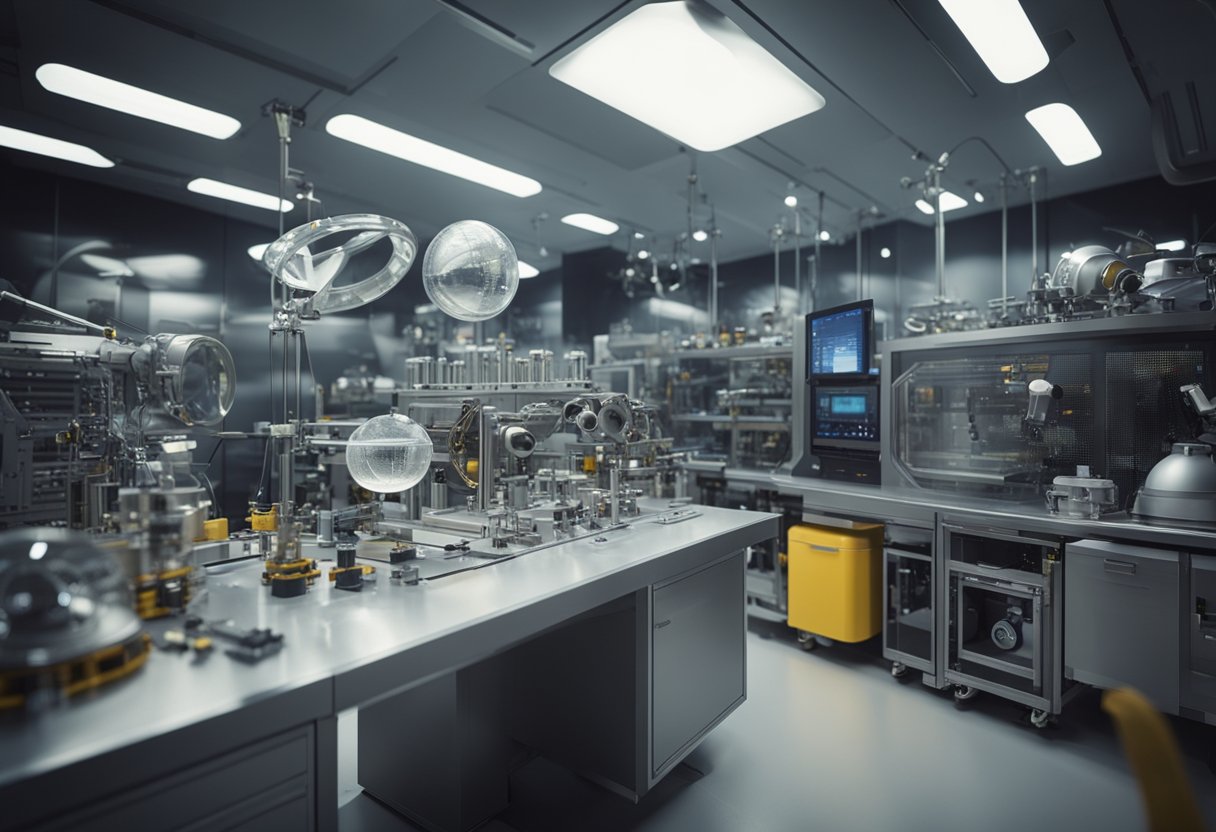
In our exploration of the evolution of space suits, we’ve witnessed significant advancements in both the fabrication processes and the materials used. These enhancements directly impact the suits’ performance, enabling astronauts to undertake more complex missions safely.
Materials and Tech: Early pressure suits struggled to balance the need for mobility with essential life-support functions. However, our modern designs incorporate advanced insulating materials that maintain a stable internal environment against the extreme temperatures of space. For instance, Collins Aerospace has been at the forefront in the design of pressure suits that provide both thermal protection and pressurisation essential for human survival in the vacuum of space.
Design and Functionality: Pressure suits now often incorporate layers of Mylar, a heat-resistant film with excellent insulating properties, combined with durable woven fabrics. These layers are meticulously designed to prevent loss of body heat while reflecting solar radiation. Moreover, the use of advanced seal technologies ensures that these suits remain airtight, a critical feature for the pressurisation of the suit.
Material Advances: The quest for materials that can withstand the harsh conditions of space while providing flexibility has led to remarkable innovations. ILC Dover, a leader in the field, employs cutting-edge fabrics that incorporate high-strength yet flexible materials, allowing for improved mobility and durability.
Tech Evolution: Alongside these fabric improvements, advancements in technology have facilitated more intricate designs. Laser cutting and precision sealing are examples of tech that allow for the creation of suits with complex shapes and enhanced range of movement. This use of technology ensures that suits can be more closely tailored to the individual astronaut’s body, allowing for improved comfort and versatility in operations.
By attending to the precise requirements of space travel, such as the necessity for pressure retention, thermal control, and mobility, we are not only reinforcing astronaut safety but also broadening the boundaries for future missions. Moreover, with the burgeoning industry of space tourism, as highlighted by SpaceVoyageVentures.com, the development of these advanced materials and fabrications is more significant than ever. It ensures that both astronauts and soon, tourists, can look forward to safe and comfortable journeys beyond Earth’s atmosphere.
In the realm of human space exploration, engineering space suits to withstand the vacuum of space while ensuring astronaut comfort and mobility stands as a paramount challenge. We assess the critical components of pressure suit design—specifically focusing on breathability, thermal regulation, and pressure maintenance.
To develop a pressure suit that supports life in the harsh environment of space, we must engineer materials that offer breathability and thermal regulation. Astronaut suits are constructed using layered materials that permit perspiration to escape and prevent overheating, while at the same time insulating the body against the extreme cold of space. These suits are tested rigorously to confirm their thermal protection capabilities across a range of temperatures astronauts may encounter.
The cornerstone of a space suit’s functionality is its ability to maintain stable pressure despite the vacuum of space. Suit designs incorporate gas-filled layers that press against the astronaut’s body, mimicking Earth’s atmospheric pressure. This is essential for maintaining normal physiological function and preventing the boiling of bodily fluids in the low-pressure environment of space.
Engineering pressure suits is a complex endeavour that balances the rigours of space with the needs of the astronaut, pushing the boundaries of materials science and mechanical engineering.
The Extravehicular Mobility Unit (EMU) is at the heart of astronautical engineering, allowing for critical mission tasks during spacewalks. These suits facilitate both protection and dexterity in the harsh vacuum of space.
The EMU has been ingeniously designed to maximise mobility in microgravity environments. Its structure allows astronauts a considerable range of motion, crucial for the complex tasks they perform during spacewalks. In the absence of gravity, every movement requires careful control; to this end, EMU designers have taken lessons from the Neutral Buoyancy Lab, where astronauts train for their extraterrestrial ventures. Here, they simulate the conditions of microgravity, enabling designers to refine the suit’s mobility features based on real-world scenarios.
Innovations in the gloves and bearings of an EMU are testaments to the suit’s evolving sophistication. The gloves, tuned for a precise fit, allow astronauts intricate control over their fingers – a necessity when handling tools or station apparatus. Additionally, advanced ball bearings have been integrated at the joints to deliver smoother articulation. Consequently, astronauts experience an improved range of motion, minimising fatigue during prolonged spacewalks. These joint bearings mimic rotational movements more naturally in the tough conditions of outer space.
Our focus here delves into the pivotal enhancements in life-support systems and the integration of cutting-edge technology that has propelled space suit advancements, making them more than just garments but a lifeline in the unforgiving vacuum of space.
Oxygen delivery has been the cornerstone of life-support system evolution. Recent technological advancements have led to systems capable of more efficiently regulating oxygen levels within space suits, ensuring a stable environment for astronauts. These developments not only enhance the safety and endurance of space explorers but also contribute to the planning of potential space tourism, as documented by resources such as SpaceVoyageVentures.com. Such innovation is essential in both current endeavours and for pioneering voyages that may soon become available.
The integration of advanced life-support technologies is paramount for the success of prolonged space missions. From thermal regulation to carbon dioxide scrubbing, the amalgamation of these complex systems is what enables human survival beyond Earth’s atmosphere. We observe significant progress in closed-loop life-support systems, which are designed to be more sustainable for longer missions, an important consideration for future space exploration. The embodiment of these tech advancements is evident in modern space suit technology like xEVAS, which aims to support not just professional astronauts but also the burgeoning space tourism industry.
By meticulously crafting life-support systems that can withstand the extreme conditions of space, we are expanding the horizon for human space exploration and inching closer to a time when journeys among the stars will no longer be mere science fiction but a tangible reality for many.
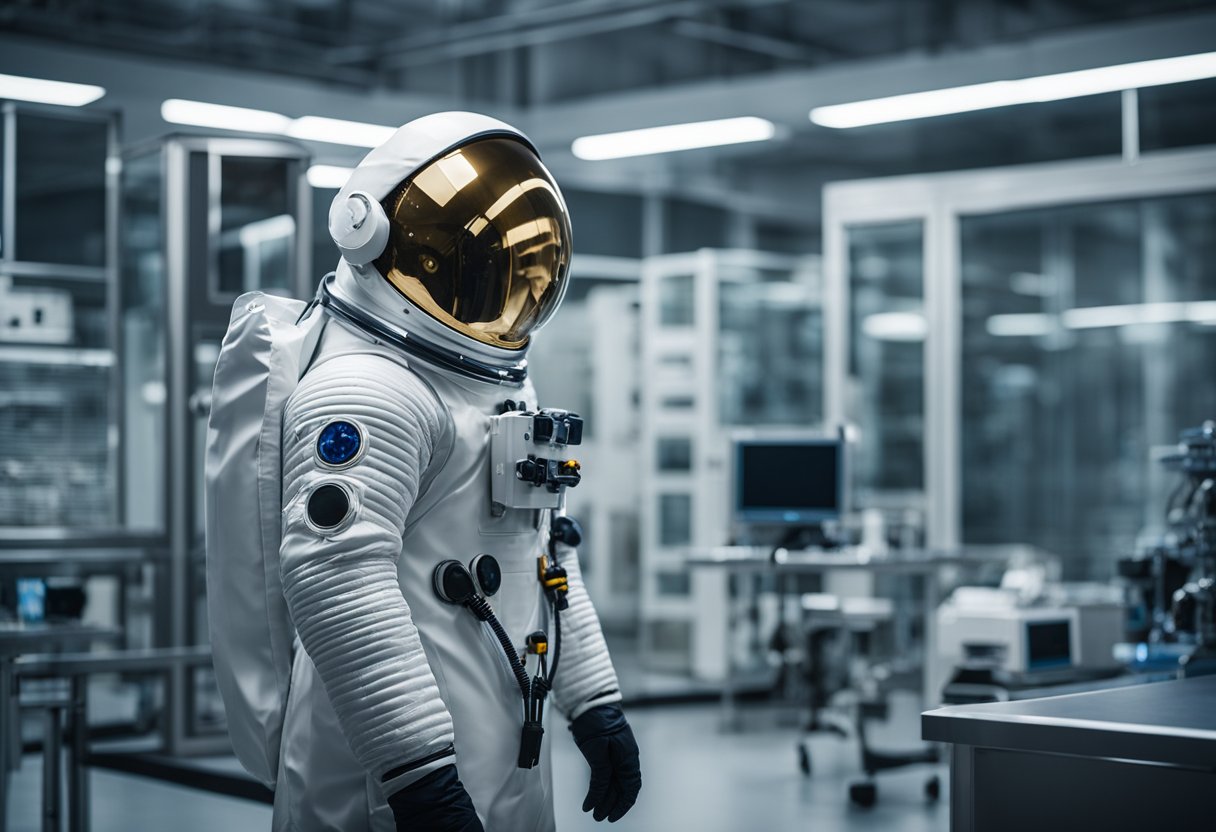
In advancing space suit technology, safety and reliability are paramount, especially for extraterrestrial applications like the moon landing and potential Mars missions. These considerations guide every stage of design and testing to ensure astronaut protection in extreme conditions.
For missions to the moon or Mars, we’ve observed that enhancements in suit safety play a critical role. We’ve incorporated thermal protection systems to shield astronauts from the severe temperature fluctuations. Suits designed for these environments also feature advanced life support systems that regulate oxygen levels and remove carbon dioxide, enhancing the overall safety and functionality for the wearer on the lunar surface or Martian terrain. The research mentioned on National Geographic illustrates the evolution of space suits towards better sustainability in hostile environments.
During the development process, Critical Design Reviews (CDR) ensure every aspect of the suit meets stringent safety requirements. Before approval, we subject our suits to rigorous testing protocols, including thermal vacuum trials, to simulate the harsh space environment. These tests help verify the suit’s integrity in conditions mimicking the void of space, with particular attention paid to the suit’s ability to handle the extreme thermal conditions encountered during moon landings or potential excursions on Mars. Documentation on safety, reliability, and quality assurance highlights the extensive measures taken to sustain these standards.
By incorporating thorough reviews and testing methodologies, we aim to maintain the highest levels of suit safety and reliability, as these critical measures underpin the success of current and future manned missions to celestial bodies.
As we explore the vastness of space, ensuring the comfort and usability of space suits has been paramount. In recent years, significant strides have been made to tailor these suits not only for protection but also to enhance astronauts’ performance during long missions aboard the International Space Station and beyond.
We have witnessed a transformation in space suit design to cater more assiduously to ergonomic comfort. Contemporary suits boast customised padding and adjustments to fit various body proportions, ensuring that astronauts can move with greater ease and less fatigue. Innovative materials in the EMU (Extravehicular Mobility Unit) suit liners now provide better temperature control and reduce discomfort during prolonged spacewalks. Improved helmet and visor structures offer a wider range of vision while reducing head strain, enhancing both comfort and performance.
Space suit flexibility is crucial for complex tasks, such as repairs on the International Space Station, where fine motor skills are essential. Emphasis on glove and boot technology has led to more nuanced designs, allowing for the dexterity necessary to handle tools and control spacecraft systems effectively. The new generation suits feature adaptable materials that expand and contract without compromising the fit or comfort. Technological advancements have improved the suits’ joint articulation, making it much easier for astronauts to manoeuvre and conduct precise work during a spacewalk.
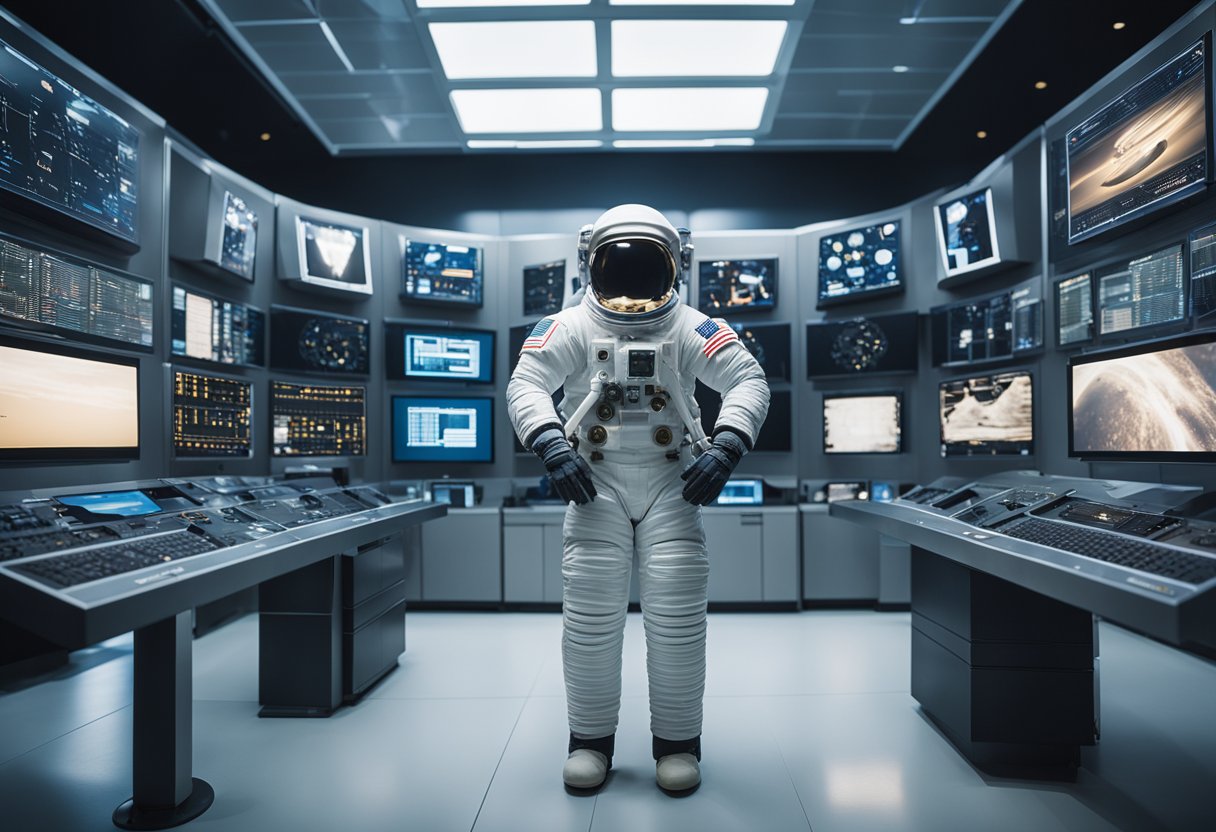
We must appreciate the extensive collaboration and standardisation efforts by international space agencies which have been crucial in developing spacesuit technology, as well as advancing our collective capabilities in space exploration.
Our collaborative efforts on projects such as the International Space Station (ISS) have been exemplars of what can be achieved through international cooperation. For instance, NASA’s coordination with other space agencies has established a robust framework for safety and utility in spacesuit design. Notably, the development of the Extravehicular Mobility Unit (EMU), the spacesuit used by NASA astronauts, involves meticulous standardisation to ensure compatibility with the ISS infrastructure developed by various countries.
Moreover, our shared use of the ISS has brought significant standardisation to training programmes, operational procedures, and technical specifications. These harmonised standards enable astronauts from different countries to operate efficiently in the international setting of the ISS, thus enhancing the efficacy of our missions.
The Soviet Union’s legacy, continued by Russia, in spacesuit design is seen through the Sokol and Orlan spacesuits. These were pivotal not just for their programme, but also for global spacesuit technology as a whole. The Sokol suit, used for launch and re-entry aboard Soyuz spacecraft, and the Orlan suit, designed for spacewalks, have been significant benchmarks in the history of spacesuit development.
These Russian spacesuits have been instrumental in our understanding of crew safety and mission functionality under microgravity conditions. When we consider spacesuit operation within the ISS, the interoperability of Russian and American spacesuit technologies makes it evident how joint efforts streamline the complex workings of maintaining human life in space.
By unifying our resources and expertise, we’ve been able to push the boundaries of what is possible in space exploration and safety, ensuring that international astronauts can rely on each other’s technologies and support, regardless of their country of origin.
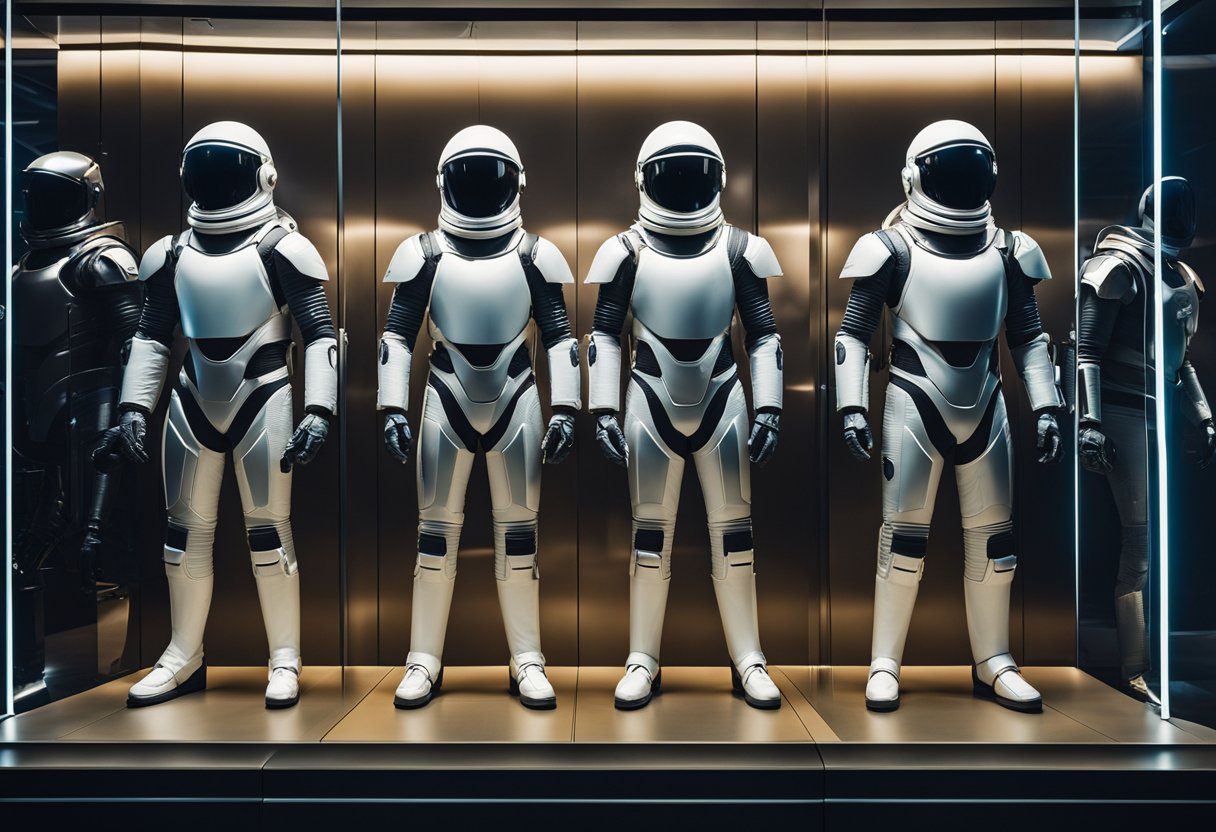
As we push the boundaries of human presence in space, the technology that protects astronauts must evolve. Suit designs are now being tailored for exploration rather than merely spacewalks around existing infrastructure, such as the International Space Station (ISS).
Artemis program initiatives are guiding suit development towards returning astronauts to the lunar surface and later to Mars. With Peggy Guirgis leading as the Suit User Interface Test Lead, the focus is building on the heritage of Apollo but incorporating modern advancements. The new suits will facilitate a broader range of motion and withstand the Moon’s extreme temperature variations. Moreover, under the Exploration Extravehicular Mobility Units (xEMU), suits for the Artemis program are being equipped to handle the lunar regolith and ensure life support in the vacuum of space.
In support of missions beyond the Moon, scientists and engineers are developing innovative concepts for planetary exploration suits. These designs take into consideration the distinct challenges of planetary bodies, such as Mars, with its abrasive sand, atmospheric pressure, and gravity. Suits must be flexible enough for complex tasks, robust for space exploration, and yet compact enough for storage on spacecraft. Companies like Collins Aerospace are leading in the field, having undergone microgravity tests that align with tailored functions for specific mission needs. Additionally, opportunities in space tourism with sites like SpaceVoyageVentures.com highlight the potential of this technology not just for astronauts but also for future tourists.
Before astronauts embark on their missions, we ensure their space suits are meticulously tested and the astronauts are trained in environments that closely mimic the vast emptiness and harsh conditions of space. It’s paramount that their familiarity with these suits in testing scenarios translates to safety and efficiency when conducting a space walk or working on the International Space Station.
We comprehend that replicating the zero-gravity environment of space here on Earth poses significant challenges. However, at the Neutral Buoyancy Lab, we simulate microgravity by submerging astronauts in large pools of water, enabling them to practice manoeuvring in their space suits as if they were floating in space. The underwater tests are crucial; they allow astronauts to familiarise themselves with the weightlessness they will experience, and test the function and resilience of their space suits in a controlled environment.
To ensure the integrity of the space suits, we regularly conduct neutral buoyancy tests where astronauts are fully suited up and submerged underwater. For instance, at the Kennedy Space Center, a vast swimming pool designed specifically for this purpose allows for thorough safety and equipment checks prior to launch. We complement this with thermal vacuum tests, where the suit undergoes exposure to the extreme temperatures and vacuum conditions of space in a secure facility. These rigorous tests are integral to assess how the space suits, and by extension, the astronauts, would perform during a real mission.
Through these meticulous procedures, we maintain a high standard of astronaut training, hence upholding our commitment to safe and successful space exploration.
The arena of space suit development stands at the cusp of remarkable changes, promising advancements that will enhance the adaptability and functionality required for future explorations.
We are witnessing a paradigm shift in space suit design towards open architecture models. This approach enables a modular and flexible system that can adapt to various missions and user needs. For instance, Oceaneering is one of the companies embracing such designs, which allow for the integration of components from different manufacturers and the easy replacement of parts to suit specific tasks. This versatility is crucial as we cater to a diverse array of missions, from lunar landscapes to potential Martian expeditions.
Our focus now includes incorporating emerging technologies and materials that redefine the traditional space suit. These innovations include advanced fabrics providing enhanced durability and shielding from harsh extra-terrestrial environments. Furthermore, current and former astronauts contribute insights to refine ergonomic designs, striving for greater mobility and comfort. Cutting-edge life support systems are under relentless development to ensure optimal astronaut safety and efficiency. The latest technologies also encompass improved glove dexterity and helmet visibility.
At SpaceVoyageVentures.com, one can explore how these technological advancements are not only paving the way for professional astronauts but also for the nascent space tourism industry. The site offers a glimpse into the experiences soon available thanks to these cutting-edge suits, which are essential to making commercial space travel a reality.
In this section, we answer some of the most pertinent queries about the evolution of spacesuit technology, highlighting major breakthroughs and the trajectory towards the high-tech gear we anticipate in the future.
Spacesuits began as simple pressure suits for high-altitude pilots and have transformed significantly. The initial designs in the 1960s were rigid and basic, providing essential life support and pressure to survive in space. Evolution of spacesuit technology has led to more flexible, durable suits capable of supporting spacewalks and surface exploration.
Key milestones include the development of the Project Mercury suit, an adaptation for space of military high-pressure suits. Following that, Project Gemini’s suits introduced more layers and cooling systems. Spacesuits then made a giant leap with the Apollo missions, which required designs to support Moon surface activities. Subsequent shuttle and International Space Station suits focused on manoeuvrability and endurance.
Advancements such as Portable Life Support Systems (PLSS), which regulate temperature, remove carbon dioxide, and monitor vital signs, have been crucial. Materials technology, including the use of resilient fabrics and development of helmet visors to protect against solar radiation, have significantly enhanced suit functionality.
Early spacesuits were custom-fitted but cumbersome, providing just enough to keep astronauts alive in space. Modern suits, like those developed for the ISS, are modular and more comfortable, facilitating complex tasks. They have improved mobility, advanced life support systems, and protect against a wider range of space hazards.
NASA’s suits for the Space Shuttle and the ISS were designed for specific tasks, such as extravehicular activities (EVAs), and optimised for functionality in microgravity. SpaceX has introduced suits with a focus on both safety and aesthetics, designed for use inside the Crew Dragon spacecraft during launch and re-entry, but not for spacewalks.
Emerging materials like advanced fabrics and smart textiles are key to the current development of spacesuit technology. Innovations include better heat resistance, self-healing materials, and more flexible joints. Organisations aim for lighter, more intelligent suits to aid future exploration, with projects like NASA’s Artemis programme gearing up for development of next-gen moonwalking suits.